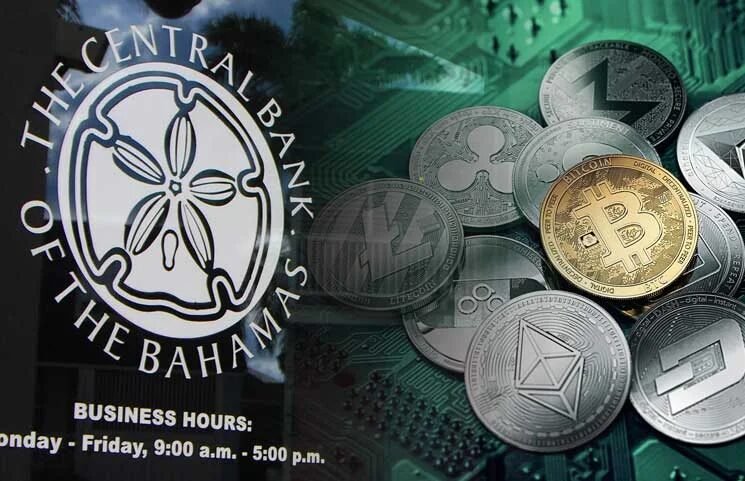Top 10 CBDC Projects in 2025: How Central Bank Digital Currencies Are Reshaping Money
The Top 10 CBDC projects in 2025 highlight just how quickly central bank digital currencies have moved from research papers to real-world testing grounds. With 137 countries exploring CBDCs — covering 98% of global GDP — the conversation has shifted from “if” to “how” and “when.” Some nations are prioritizing financial inclusion, others are pushing cross-border settlement efficiency, and many are positioning their digital currency as part of larger geopolitical and monetary strategies.
Why CBDCs Matter in 2025 – Top 10 CBDC
Central bank digital currencies (CBDCs) come in two forms: retail CBDCs, aimed at everyday users and merchants, and wholesale CBDCs, designed for interbank settlements. In 2025, three retail CBDCs have fully launched, while nearly 50 projects remain in pilot stages. Their importance lies in three overlapping goals: broadening financial access, modernizing payment systems, and ensuring national monetary sovereignty in a world increasingly influenced by cryptocurrencies and stablecoins.
Global Trends Behind the CBDC Push – Top 10 CBDC
CBDCs are not evolving in isolation — they mirror global financial shifts. Emerging markets, such as Nigeria and Jamaica, see them as a path to inclusion for unbanked citizens. At the same time, initiatives like Project mBridge or Project Dunbar aim to streamline cross-border transfers, a system long criticized for high fees and inefficiency. Another driver is geopolitics: the rise of the Digital Yuan has pushed the U.S. and Europe to move faster, worried about their monetary influence in international trade. The gradual decline of cash and the move toward programmable money further accelerate the momentum.
Selection Criteria for the Top 10 – Top 10 CBDC
To compile this list, we considered scale, stage of development, cross-border potential, technological infrastructure, and global influence. Some projects stand out for their retail focus, others for wholesale innovation, and a few for their pioneering role despite smaller economies.
1. China – Digital Yuan (e-CNY)

Source: SCMP
China remains the largest CBDC pilot in the world. By mid-2024, transactions surpassed 7 trillion e-CNY, and the program keeps expanding into healthcare, education, and tourism. The digital yuan also plays a crucial role in cross-border experiments through Project mBridge, strengthening China’s long-term goal of yuan internationalization. For Beijing, the digital currency is both a domestic modernization tool and a geopolitical lever.
2. India – Digital Rupee (e₹)

Source: ETgovernment
The Digital Rupee has emerged as the world’s second-largest pilot. In 2025, circulation hit ₹10.16 billion ($122M), a 334% surge compared to the previous year. India is testing both retail and wholesale versions, with special attention on offline usability in areas with poor connectivity. By expanding pilots to new user groups and payment ecosystems, India positions its CBDC as a bridge between inclusion and efficiency.
3. European Central Bank – Digital Euro
Europe’s answer, the Digital Euro, is advancing through pilot phases with strong emphasis on privacy and consumer safeguards. Holding limits are part of the design, meant to avoid disintermediation of banks. At the same time, wholesale testing focuses on settlement with commercial banks. For the eurozone, this is not only a financial project but also a statement of sovereignty in the face of rising digital currencies elsewhere.
4. Nigeria – eNaira

Source: VanGuardngr
Nigeria was among the first movers with a retail CBDC, but adoption has been slower than expected. Challenges with trust, usability, and incentives have kept uptake modest, yet the government continues to push it forward. The eNaira serves as a case study for African nations exploring digital money — balancing ambitious goals with on-the-ground realities.
5. The Bahamas – Sand Dollar

Source: Enews
The Sand Dollar, launched in 2020, holds the title of the world’s first fully operational CBDC. While small in scale, it has delivered meaningful impact by improving financial access across remote islands. Its role in local tourism and retail showcases how CBDCs can solve highly specific challenges in smaller economies, even if global influence remains limited.
6. Jamaica – JAM-DEX
Jamaica’s JAM-DEX focuses on financial inclusion. Incentives, such as government payments distributed through the CBDC, aim to bring in unbanked populations and small businesses. Adoption remains gradual, but the project demonstrates how political will can integrate CBDCs into everyday life.
7. Project mBridge (Hong Kong, Thailand, UAE, Saudi Arabia)

Source: LedgerInsights
Unlike retail currencies, Project mBridge is a wholesale initiative reshaping cross-border transfers. What began as a collaboration with the Bank for International Settlements has grown into an independent platform. Its trials show that cross-border settlements can be completed faster, cheaper, and more securely — a direct challenge to USD-dominated systems.
8. Project Dunbar (Australia, Singapore, Malaysia, South Africa)
Led by the BIS Innovation Hub, Project Dunbar tests interoperability for wholesale CBDCs across multiple currencies. It tackles both the technical and legal complexities of cross-border settlements. While still experimental, Dunbar’s findings may serve as a blueprint for other regional payment unions in the future.
9. Eastern Caribbean Central Bank – DCash

Source: ECCB
The DCash project spans several island nations, an ambitious experiment in regional retail CBDC. Technical issues, including outages, have challenged adoption, but improvements in resilience continue. Its importance lies not only in serving local populations but also in testing what a multi-country digital currency union could look like in practice.
10. United States – Project Agorá

Source: Ledger Insights
While the U.S. halted plans for a retail digital dollar under political pressure in 2025, it remains engaged in wholesale research through Project Agorá. Partnering with six major central banks, the project focuses on secure cross-border settlements. The U.S. stance matters: by holding back retail but advancing wholesale, it signals caution but also recognition of the global stakes in CBDC development.
Comparative Takeaways – Top 10 CBDC
The 2025 landscape shows a split between retail CBDCs in emerging markets — designed for inclusion and access — and wholesale CBDCs in advanced economies, designed for efficiency and monetary strategy. China and India lead in scale, while the Bahamas and Jamaica highlight localized but important use cases. Regional collaborations, from DCash to mBridge, show the potential of multi-country approaches.
Risks and Challenges Still Ahead – Top 10 CBDC
CBDCs are far from risk-free. Banks worry about disintermediation, particularly if citizens prefer to hold digital central bank money instead of deposits. Cybersecurity remains a pressing concern, alongside debates about privacy, anonymity, and surveillance. On the infrastructure side, building resilient and interoperable systems is both costly and politically sensitive. Finally, adoption cannot be taken for granted — as Nigeria’s eNaira experience demonstrates.
Conclusion: CBDCs Enter Their Defining Phase – Top 10 CBDC
By 2025, central bank digital currencies are no longer abstract experiments — they are live systems shaping real economies. The Top 10 CBDC projects in 2025 illustrate both promise and pitfalls. From China’s global ambitions with the Digital Yuan to small but pioneering efforts like the Sand Dollar, CBDCs are building the foundation for a new digital monetary era. The next phase will determine whether they coexist with cash and crypto — or evolve into a central pillar of the world’s financial architecture.




